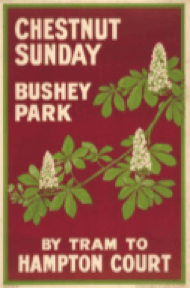At a spacious 1,100 acres in area, Bushy Park is the second largest of the London Royal Parks. For many generations it has welcomed local visitors, and those from afar.
History reveals the earliest archaeological records, date back to the Bronze Age, and in the medieval period, the park was used for agricultural purposes. It became a royal park in 1529 when Cardinal Wolsey passed it to King Henry VIII.
The king created deer hunting in Bushy Park. His successors added a number of features, including the Longford River, a 19km canal built on the orders of Charles 1, to provide water to Hampton Court Palace. During this period Chestnut Avenue was constructed, which leads from Park road Teddington, to Lion Gate, opposite the palace. The avenue was designed by Sir Christopher Wren. The Diana Statue, (sometimes described as Arethusa) was created in 1637, and the statue and its water feature are located in Chestnut Avenue.
Among those who served as Park Ranger was King William IV, and following his death, his consort Queen Adelaide was appointed ranger, but when she died the position fell into disuse. Several houses were added to the park in the 17th and 18th centuries, including Bush House, which in 1900 was given by Queen Victoria to the National Physical Laboratory. Among the many roles of the NPL is responsibility for regulating Greenwich Mean Time.
During the First World War, Canadian troops were stationed in Bushy Park, and in the Second World War, a US air base, called Camp Griffiss, was established there. From the base General Dwight D Eisenhower (later US President 1953-1961) planned the D-Day landings. A memorial dedicated to the Allied troops who fell on D-Day now marks the area where the Generals tent stood, and the nearby Eisenhower House is named in the Generals honour.
Within the Park are the Waterhouse Woodland Gardens created in 1925, and the Upper Lodge Water Gardens which after a major restoration programme opened in 2010.The Park is well known for its grasslands, and mature trees. Several trees were uprooted during the infamous Great Storm of 16th October 1987, however over a thousand new trees have since been planted.
Wildlife to be seen include, rabbits, voles, mice, and hedgehogs. Over three hundred in number, the legendary red and fallow deer can be seen roaming the park.
Many varieties of birds can be observed including kingfishers, skylarks, herons, geese, and mallards. Many visitors come to celebrate Chestnut Sunday, and to see the blossoming of the trees along the avenue. The custom is held in May each year, when there is a parade, traditional fairground, interesting stalls, live music, and many other attractions. This year the event is being held on May 6th.
There is a children’s adventure playground, which includes a sandpit, timber climbing frame, balance beam, and sea saw. Bushy Park is home to sport clubs including, golf, rugby, hockey, bowls, and cricket. Additional sports available are tennis, fishing, and horse riding. The park is perfect for cycling, walking, and jogging, and running events and general fitness sessions are held there. Amenities include car parks, a café and refreshment points.
Bushy Park is an ideal place to wander, for a few hours, or a whole day, and another enticement, admission to the park is totally free.

